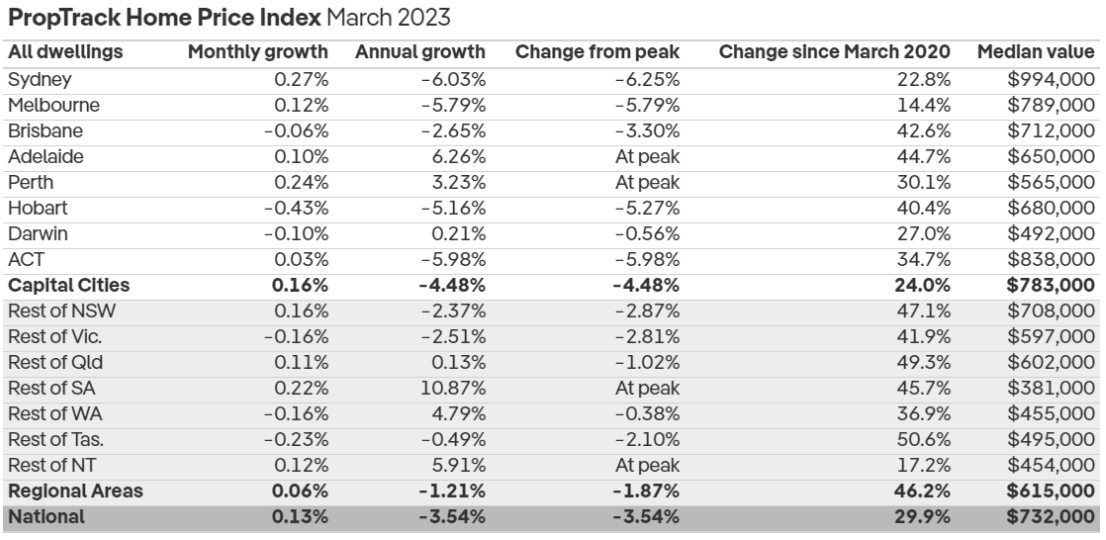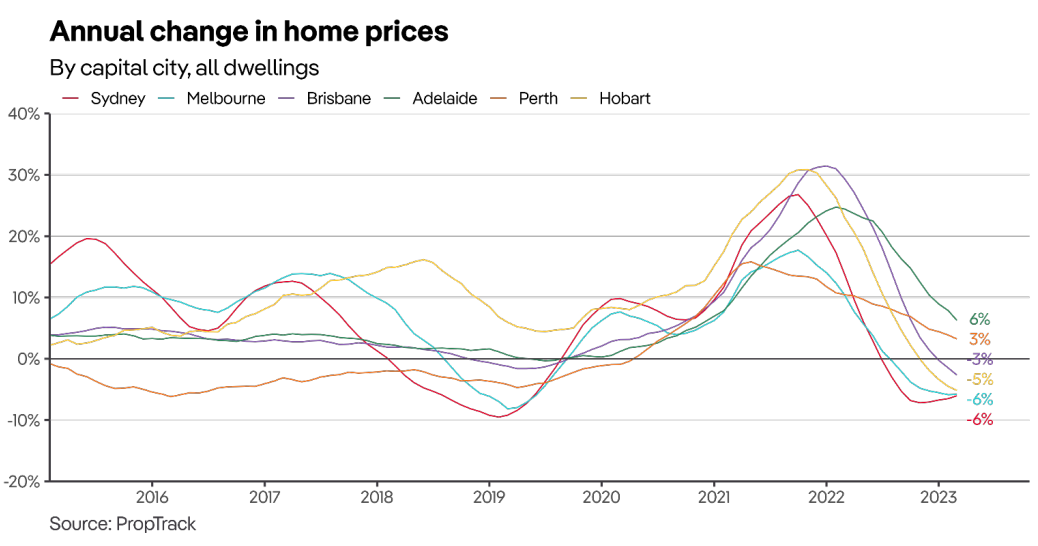PropTrack has released its home values results for March, which shows that values nationally rose by 0.13% in March – their third consecutive monthly increase – to be up 0.49% in 2023:

The next chart plots annual price growth across the major capital cities, with Sydney (-6.0%) and Melbourne (-5.8%) leading the annual decline:

Prices nationally are up 29.9% from their pre-pandemic levels, according to PropTrack.
PropTrack notes that “the recent upturn has been influenced by the limited supply of properties for sale. Even though buyer demand is weaker than peak levels seen last year, softness in new listing volumes and tight supply has offset this, leading to a pickup in competition among potential buyers that has buoyed values”.
“While the significant reduction in borrowing capacities and deterioration in affordability caused by interest rate rises implies larger price falls, the impact of rate rises is being counterbalanced”, notes PropTrack.
“Positive demand drivers offsetting the downwards pressure include the strong rebound in immigration, tight rental markets and (slowly) increasing wages growth. The sustained softness in new listing volumes is also keeping a floor under prices”.
PropTrack argues that “if the RBA pauses its tightening cycle this month or next, the bottoming process may continue, with home prices stabilising further”.
“Some of the uncertainty buyers have experienced with respect to borrowing capacities and mortgage servicing costs will also ease and may boost confidence”.
That said, PropTrack believes “headwinds remain, with the full impact of recent rate rises yet to be felt. This means the decline in prices could still find a second wind, particularly if new listing volumes increase in the coming months”.
Regardless of whether this is the bottom, the ducks are aligning for strong house price growth in 2024 for the following reasons:
- The Reserve Bank is likely to cut interest rates, which would lift borrowing capacity.
- APRA is likely to reduce the 3% mortgage buffer, which would further boost borrowing capacity.
- Rapid immigration is likely to continue.
- The rental market will tighten further.
- Housing construction will be constrained due to high construction costs and widespread builder insolvencies.
There is genuine demand in the market. The only thing holding prices back is high mortgage rates and their impact on borrowing capacity.
Remove that constraint and you have the ingredients for the next house price boom.

